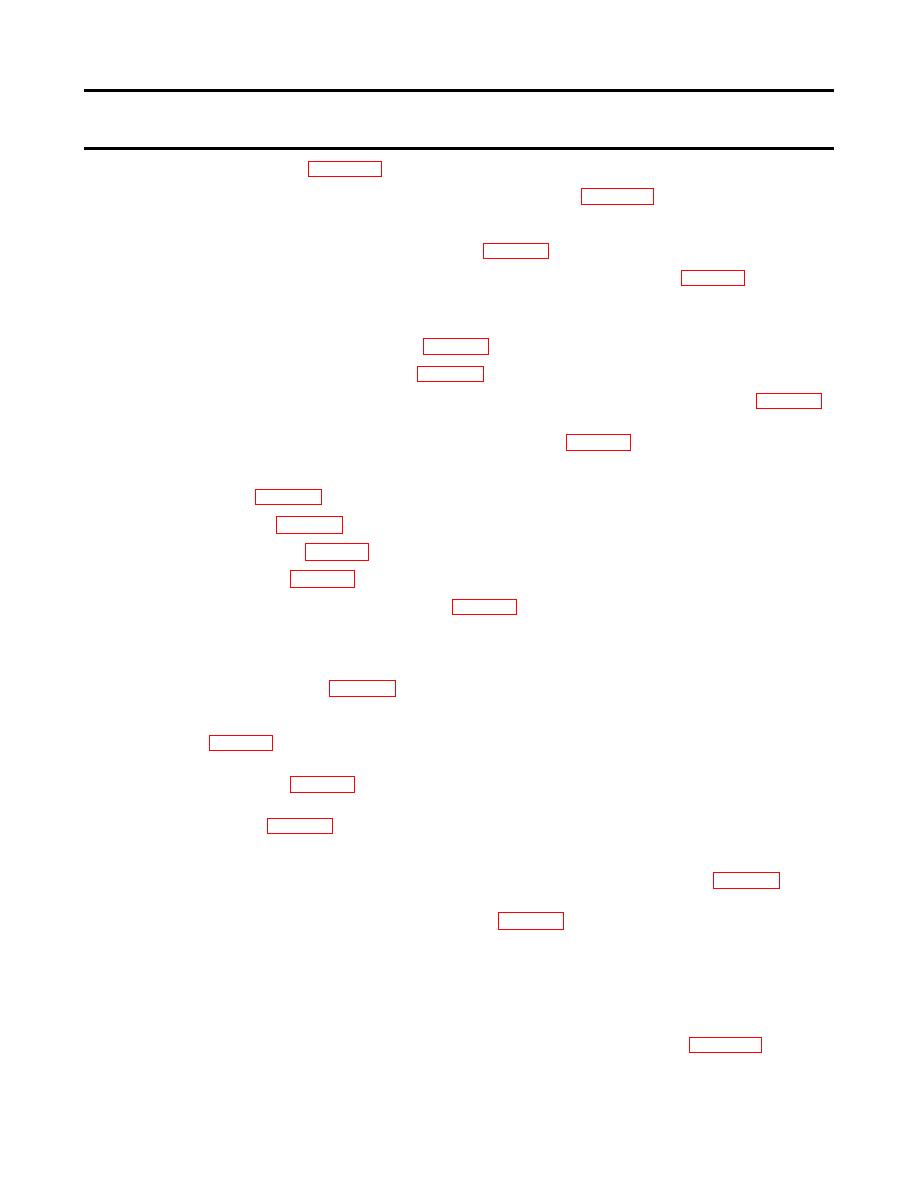
| Tweet |

Custom Search
|
|

|
||
 TM 55-1905-217-34
MALFUNCTION
TEST OR INSPECTION
CORRECTIVE ACTION
Step 2. Check the flatness of the reverse piston and reaction plate.
Replace if badly warped (para 3-26).
Step 3. Inspect the clutch facings for wear.
If the facings are badly worn, the clutch plate should be replaced (para 3-26).
1. Alternator fails to charge.
Step 1. Check for open isolation diode.
Disassemble alternator and replace isolation diode (para 4-2).
Step 2. Check for open rotor winding.
Disassemble alternator and verity rotor winding continuity. Replace rotor if open (para 4-2).
Step 3. Check for sea water from leaking bilge pump shorting out voltage regulator.
Replace or repair leaking gland (TM 55-1905-217-12, para 4-101 ).
b
2. Low or unsteady charging rate.
Step 1. Check for open, grounded, or shorted turns in stator coils.
Disassemble alternator and replace stator (para 4-2).
Step 2. Check for grounded or shorted turns in rotor winding.
Disassemble alternator and replace rotor (para 4-2).
Step 3. Check for open or shorted rectifier diode(s).
Disassemble alternator and determine which diode plate has faulty diode. Replace diode(s) (para 4-2).
3. Noisy alternator.
Check for worn bearings.
Disassemble alternator and replace worn or defective bearings (para 4-2).
Electric Starting Motor
1. Starter does not crank engine adequately.
Step 1. Check for damaged brushes.
Replace brushes (para 4-3).
Step 2. Check for worn commutator.
Repair commutator (para 4-3). Replace armature if necessary.
Step 3. Check for open field coils or armature winding.
Overhaul starting motor (para 4-3).
Step 4. Check for damaged Bendix drive.
Replace Bendix drive (para 4-3).
Step 5. Check for worn bearings.
Replace bearings and overhaul starting motor (para 4-3).
Hydraulic Starting System
1. Cranking speed too low.
Check for excessive internal leakage in starting motor.
Check for broken cylinder, scored face (port plate or cylinder), broken or weak cylinder spring and
damaged seal surfaces.
Replace parts as necessary (para 4-6).
2. Loss of fluid from reservoir.
Check for worn starting motor shaft seals.
Remove housing plate and examine inside of housing. If evidence of system fluid is found, replace
shaft seal (para 4-6) .
3. Hydraulic starting motor turns but engine does not.
Check for damaged, overrunning clutch.
Replace Bendix drive (para 4-6).
4. Hand pump fails to charge system
See if piston seal rings are damaged.
Replace seal rings (para 4-9).
5. Loss of accumulator precharge (nitrogen).
Step 1. Check for damaged seal ring or piston.
Release all hydraulic pressure before removing the accumulator from the system and release nitrogen
pressure;. then disassemble the accumulator. Replace defective piston sealing rings (para 4-8).
Step 2. Check for damaged seal ring between tube and end cap.
Apply liquid soap on threaded end of accumulator at end cap. Bubbling of soap indicates a leak past
end cap seal., release nitrogen before replacing seal (para 4-7).
6. High pressure in system (3500 psi or above).
See if unloading valve is operating properly.
Clean and adjust to specified operating pressure. Check that the plunger is not binding or sticking.
NOTE
There is a 500 lb differential between cut-out and cut-in.
Steering System
1. Steering wheel difficult to turn.
See if dirt has become trapped in helm unit.
Disassemble unit and thoroughly clean all surfaces of spool. Repair as necessary (para 4-13).
2. Steering wheel continues to turn after being started and released.
Same as 1 above.
Same as 1 above.
2-6
|
||
 |
||